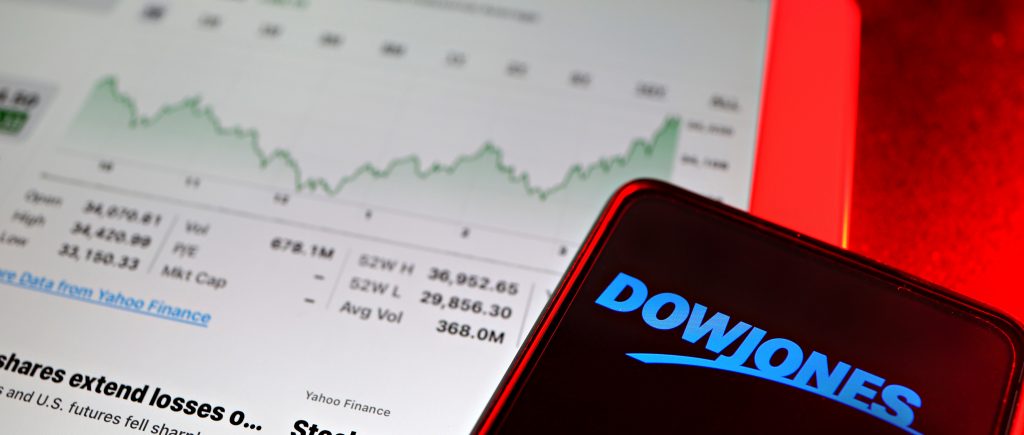The Dow Jones Industrial Average suffered a significant setback on Friday, plummeting over 350 points and erasing much of the recent post-election rally. This sharp decline reflects growing investor concerns about the economic outlook and potential policy shifts.
A key factor contributing to the market’s downturn was the release of October’s retail sales data. While the figures marginally exceeded expectations, they still indicated a slowdown in consumer spending. This suggests that the post-election optimism may be waning as economic realities begin to set in.
Furthermore, Federal Reserve Chair Jerome Powell’s recent comments dampened hopes for immediate interest rate cuts. Powell’s cautious stance on monetary policy reinforced concerns about a potential economic slowdown and added pressure to the market.
The decline in the Dow Jones was broad-based, with several key sectors contributing to the sell-off. Technology stocks, which have been a major driver of the recent market rally, were particularly hard-hit. Additionally, healthcare and financial stocks also experienced significant losses.
As investors grapple with these uncertainties, the market’s future trajectory remains unclear. While the Dow Jones has shown resilience in recent months, the potential for further volatility cannot be ruled out. It is crucial to monitor economic indicators, geopolitical developments, and central bank policies closely to gauge the market’s next move.
In the short term, the Dow Jones may continue to face downward pressure as investors reassess their positions and adjust to the evolving economic landscape. However, longer-term prospects remain optimistic, driven by factors such as strong corporate earnings, low interest rates, and ongoing technological advancements.

 Noor Trends News, Technical Analysis, Educational Tools and Recommendations
Noor Trends News, Technical Analysis, Educational Tools and Recommendations




